#AniMERLCrossing: A Gallery of Smocks

In response to our challenge, you designed and crafted amazing smocks in Animal Crossings. So we’ve gathered them together here.
Let’s use your creations as a way to explore the history of the items that inspired them. We’ll look at how and why smocks end up in museums. What do they tell us about people’s lives now and in the past. What are they and how were they made?
We’ve explored smocks online elsewhere but your amazing digital smocks provide an ideal excuse to look again. So join us as we peel off the romantic overalls of history and delve into what was really going on. If you fancy a less digital (but nevertheless sort of virtual) smock-based challenge, take a look at this handy blog post.
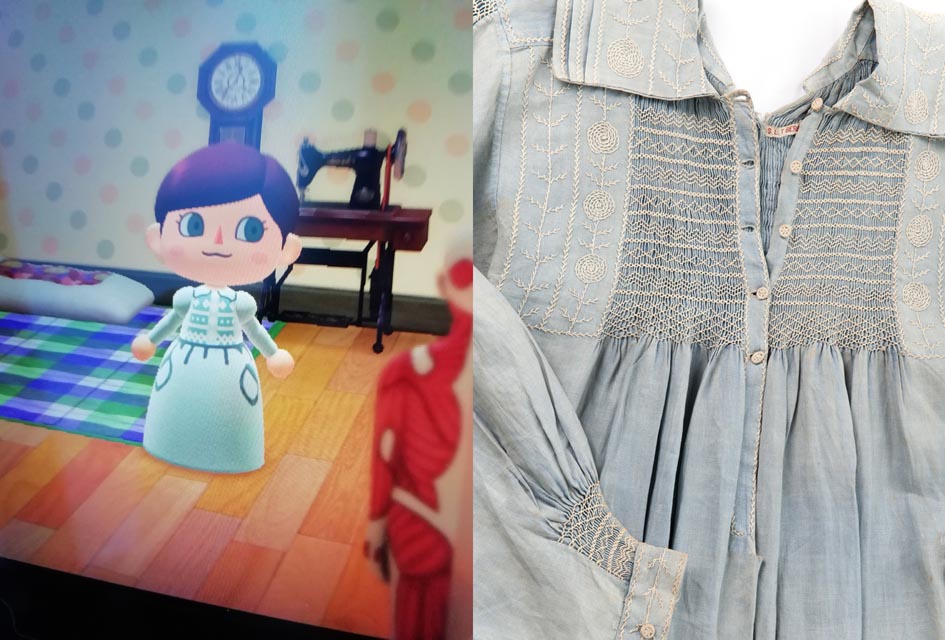
Taking it from exhibit to design
Eilidh (@spaceladyart) was inspired by a section called ‘smocks and their embroidery’ in our online exhibition, Smocks, Smocking, and Smocked (check it out for details, thoughts, and theories about the fascinating world of smock-frocks). Behind her digital design lies a real smock made by Bere Regis Craft Association in the early-twentieth-century. We have great respect for her fine creation (and for the treadle sewing machine in the background of her pic!).
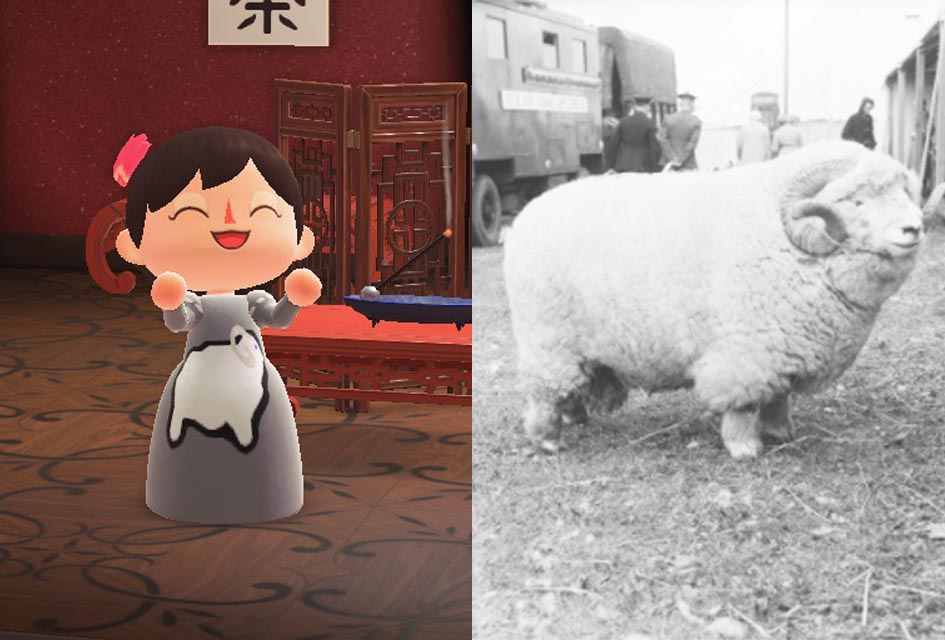
On cloud nine with a ‘Unit’ design
Who wouldn’t want The MERL’s own Absolute Unit on a smock? Thanks to Regina (@thehatter6453) we have a traditional take on our sought-after souvenir. The MERL’s famed image now adorns a smock as well as a t-shirt. A great reminder that smocks were common workwear for English shepherds until the late-nineteenth-century. Such clothing fell out of working use long before the 1960s, when the ram was photographed.
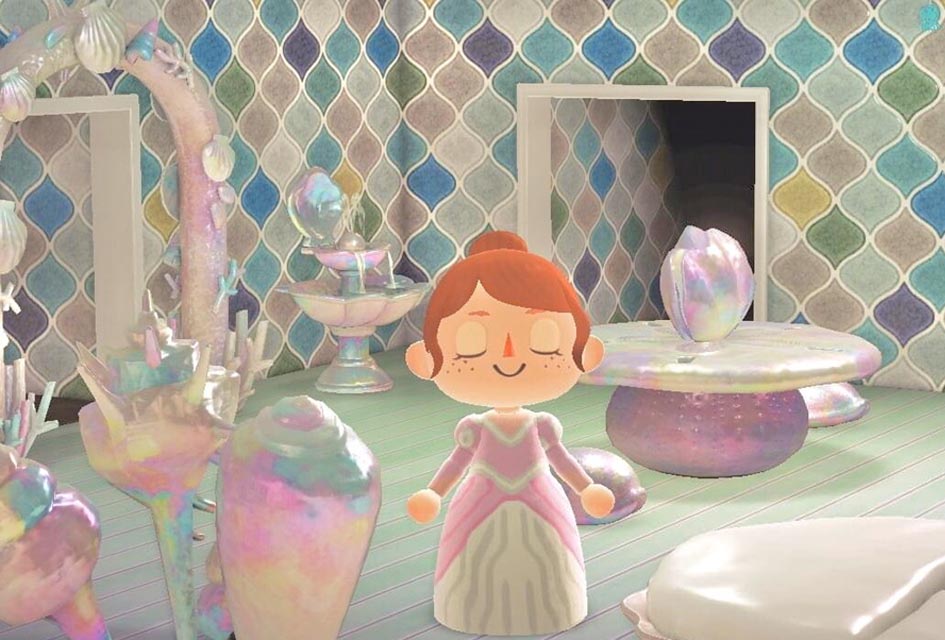
Keeping it safe in the grotto
@dreamlandgem’s smock is really a dress. To be honest it’s not clear if it’s a response to The MERL challenge. We’re including it anyway, mainly because it’s in a mermaid cave. The shells on the arches look like decorations on a garden folly or nature grotto. Writer H. J. Massingham—donor of The MERL’s first smocks—originally kept his collection in a garden shed called ‘The Hermitage.’ The name for his storehouse came from a summer house folly that belonged to eighteenth-century naturalist Gilbert White.
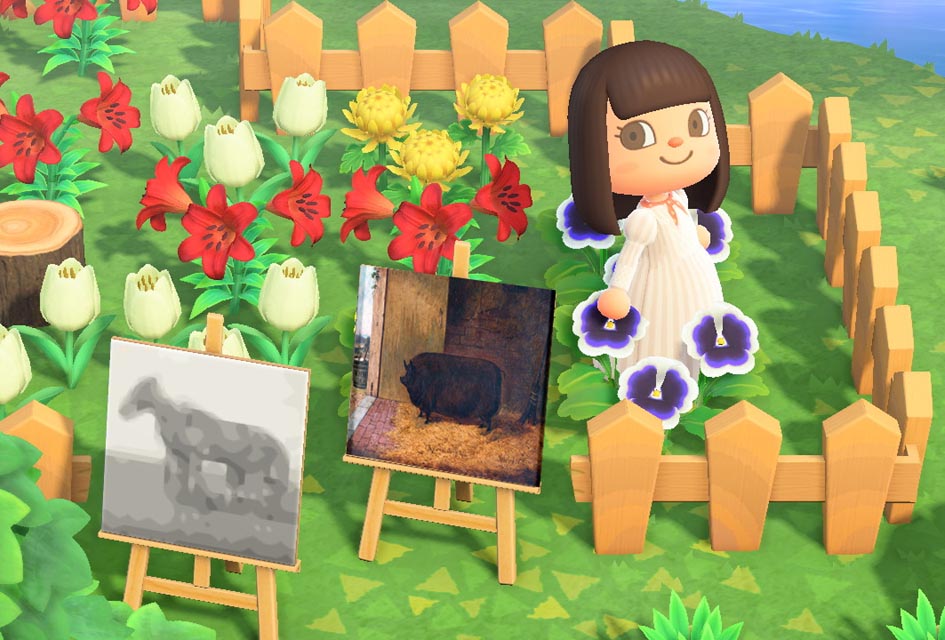
Top-class smock collector
@GettyMuseum, one of the world’s great galleries, is vying for a spot in the pantheon of digital smocking. They surrounded this smock with animal portraits from their collection. We’ve replaced one of their portraits with our own big beast. Getty are total collectors. They have a real collection. They are building a virtual collection in Animal Crossings. They even ‘collected’ this smock – the design itself was created by Nicole (@ACNHfashion).

Designer smock for a fashionista
@willuminare’s smock design reference to ‘couture’ reminds us of the links between traditional clothing and high fashion. Smock-inspired outfits have been made by fashion houses and high street outlets alike. The MERL holds an example of a smock-inspired Laura Ashley top from the 1970s. Although not quite haute couture, it is certainly closer to the catwalk than the cattle-pen.
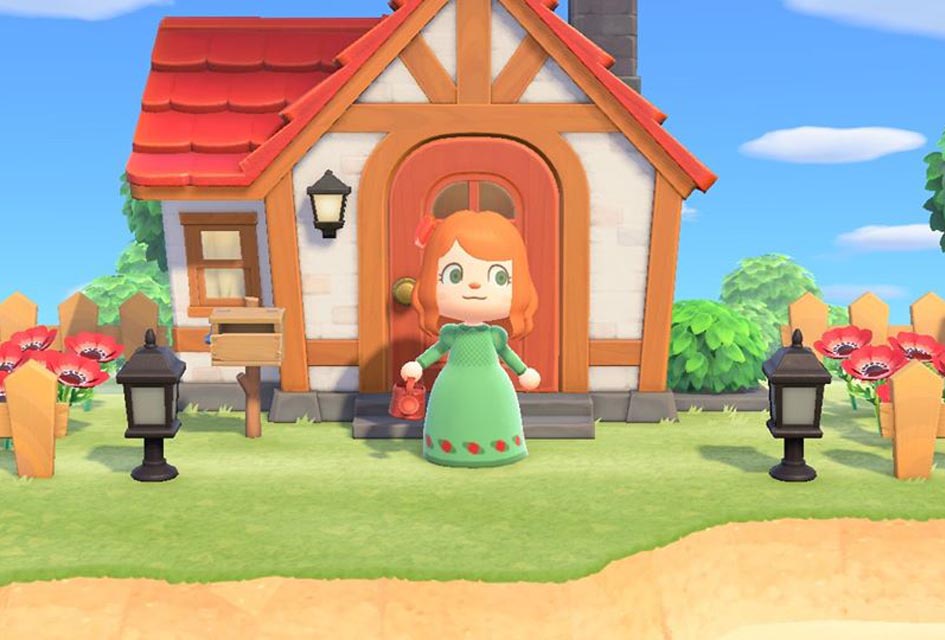
The Belle Époque smock-frock
The roses on Molly‘s (@Mollyru) smock reference a dress worn by Belle in Beauty and the Beast (in a Disney adaptation). From ball gowns to workaday clothing, costume plays an important part in storytelling. Thomas Hardy used smocks as a way to show working class culture. Folklorists collected smocks for similar reasons. Our collection includes examples used in pageants and plays. We even bought one smock from a theatrical costumier.
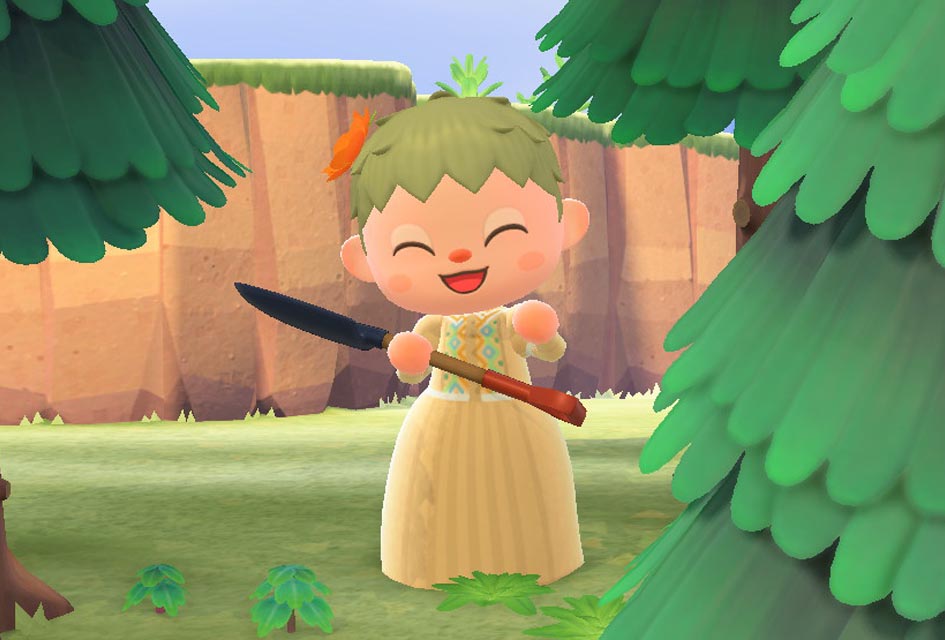
Tank tops at the ready, its a folk revival
Georgina Boyes’ The Imagined Village is a book about the twentieth-century folk revival. The back cover described ‘morris dancers on village greens, stereotypes of bearded singers in Aran sweaters, and piping waifs in Laura Ashley smocks.’ Our Smocks, Smocking, and Smocked online exhibition included 1940s patterns. We also have 1960s smocked children’s dresses. @nixnameweilbaum’s fun, colourful design has the folksy look of smocking of this vintage, dating to when such garments were nolonger simply overalls.
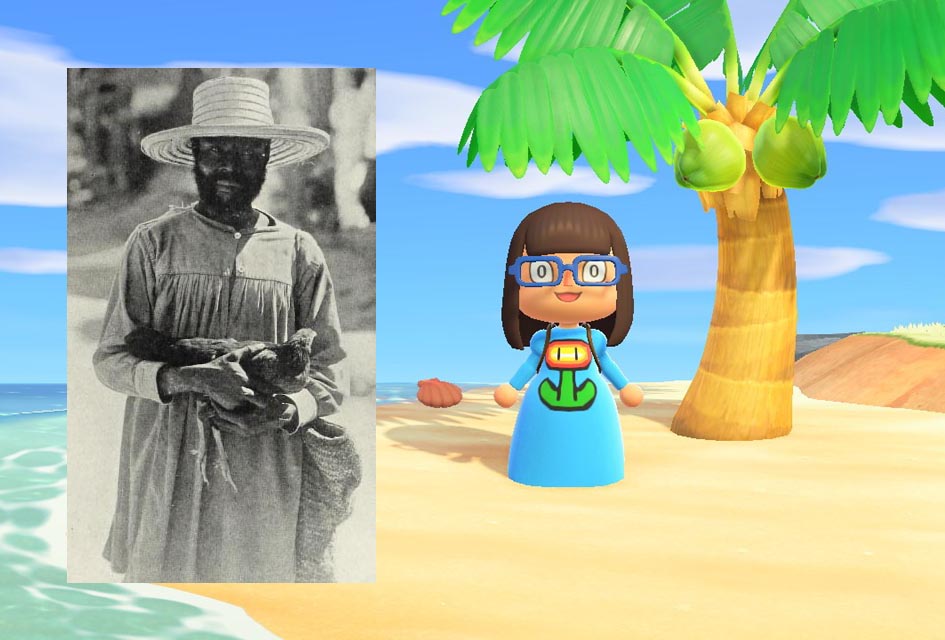
From the Cotswolds to the Caribbean
This flower power smock designed by Marissa (@marissakings) seems modern but offers a meeting point between past and present. The wearer is on a beach, where smocks seem out of place. However, smocks were sometimes exported for slaves to wear on Caribbean plantations. They were often made from cotton imported from sites of slavery. Rural British clothes like these became part of the rich history of Caribbean clothing. This can be seen in this image of a man in post-emancipation Haiti wearing a smock (as published in an old colonial period book).

All there in black and white
Otis‘s (@OtisRG) smock is presented in full colour and also in washed-out sepia, echoing late-nineteenth-century and early-twentieth-century photo portraits of people in smocks. Many examples of old photos of people in smocks can be found in the collections of The MERL. A great example was shown in the Smocks, Smocking, and Smocked online exhibition.

Get the Victorian look
@strawbery_boy’s smock is described as ‘cross-laced’, suggesting a form of bodice-style, corset-laced dress common during the late-nineteenth-century. The attribution of a 1900s date is certainly about right. More elaborate forms of smock, decorated with elaborate stitched designs, emerged in the nineteenth century. Plus, although some objects in Animal Crossings are clearly not period accurate, the candlestick is perfect and we love it. In fact, it’s just like (many) candlesticks in The MERL.
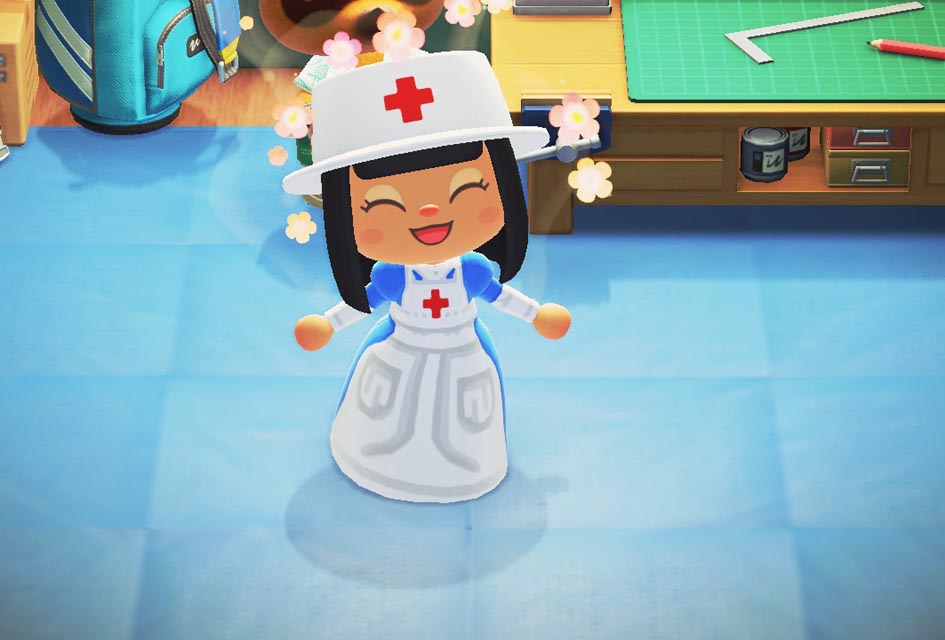
Stay home, save lives, study smocks
@antlerantler’s offers tribute to the brave efforts of medical staff tackling Covid-19. She does so by celebrating an American First World War nurse’s smock. The history of such uniforms reminds us that smocks are essentially just overalls. Like modern-day personal protective equipment, they keep the wearer and their clothes safe from the mess of work. Judging by a photo at The MERL, British First World War nurses didn’t wear smocks. If anyone knows of examples we’d love to know though!
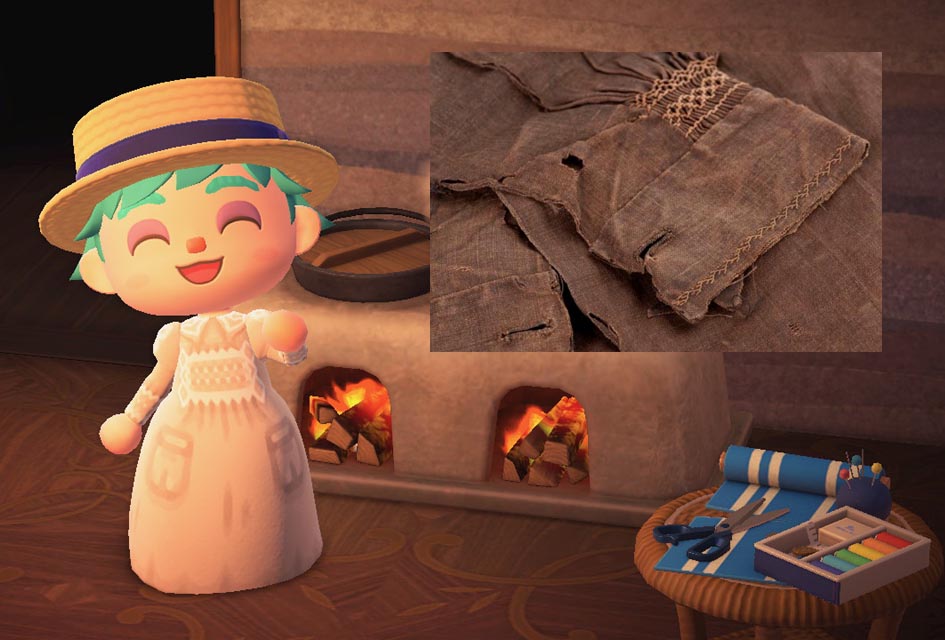
Cutting edge, super-dry design
@bankysoup had fun figuring out the finer details of an excellent brown linen smock with white stitching. They had to trick the system into letting them have the features they wanted. As it happens, there’s a brown smock with cream stitching held at The MERL, which has a trick up its sleeve (not to mention on the neck, body, and hems!). It has been oiled with linseed to render it waterproof. Sadly this also makes the textile very fragile.